Lecture 2. Word meaning Word meaning is

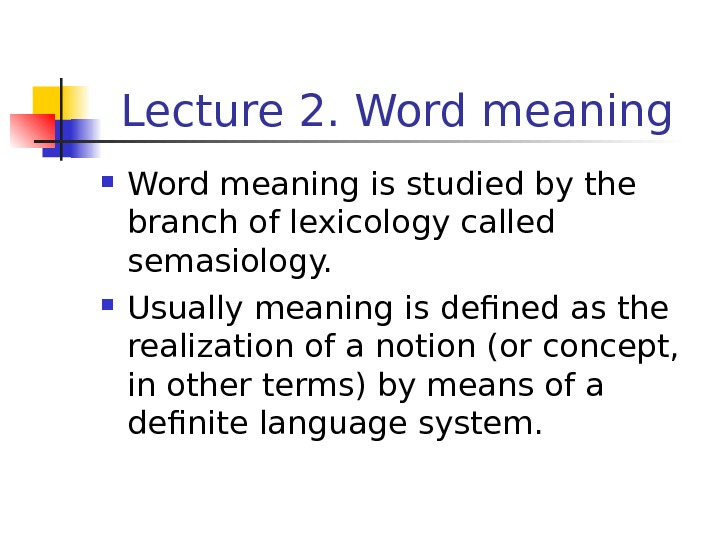

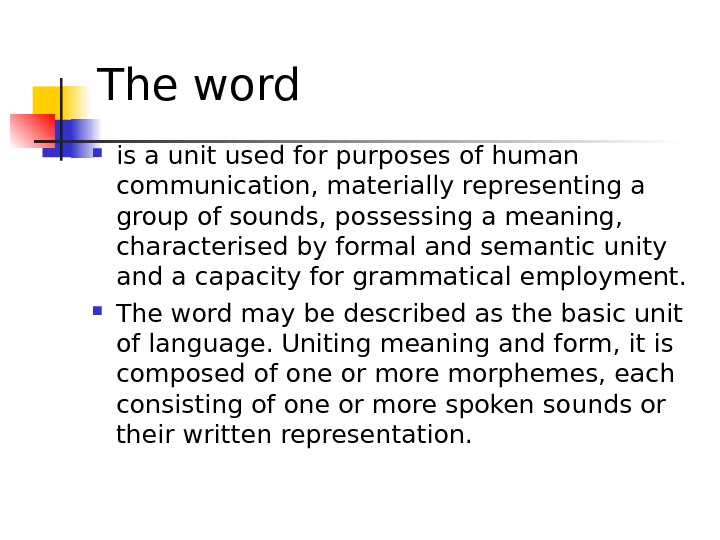

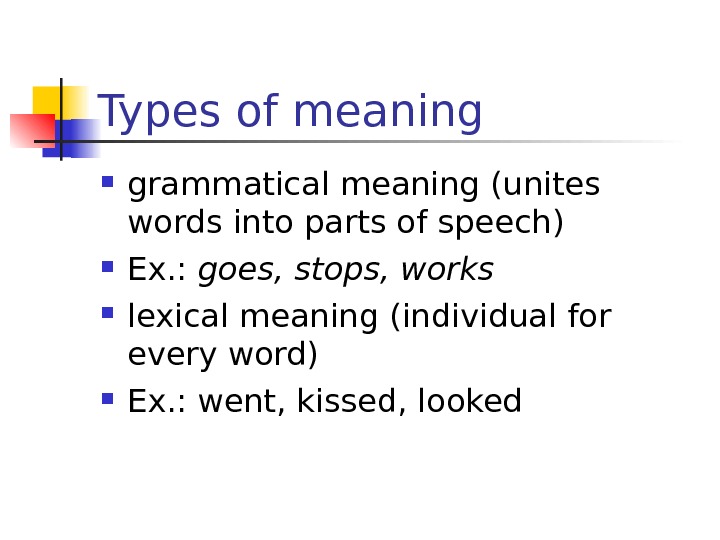
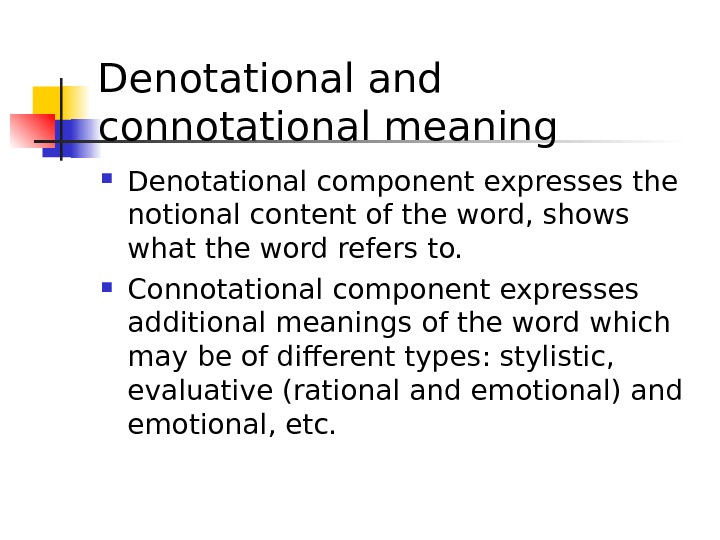




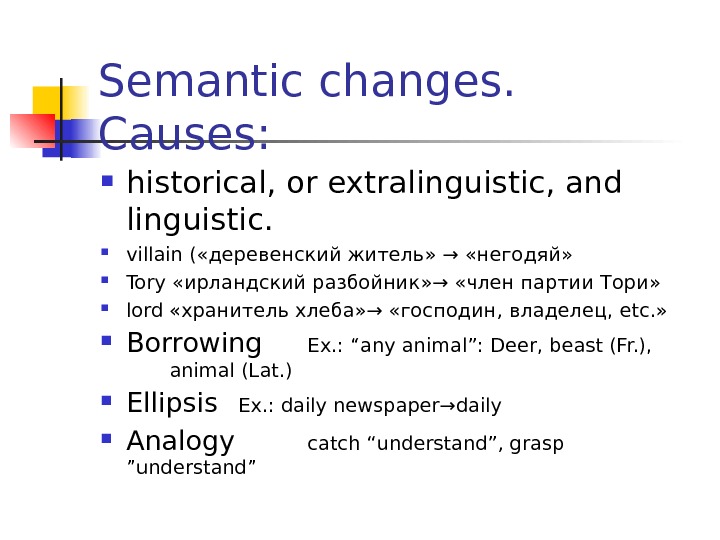
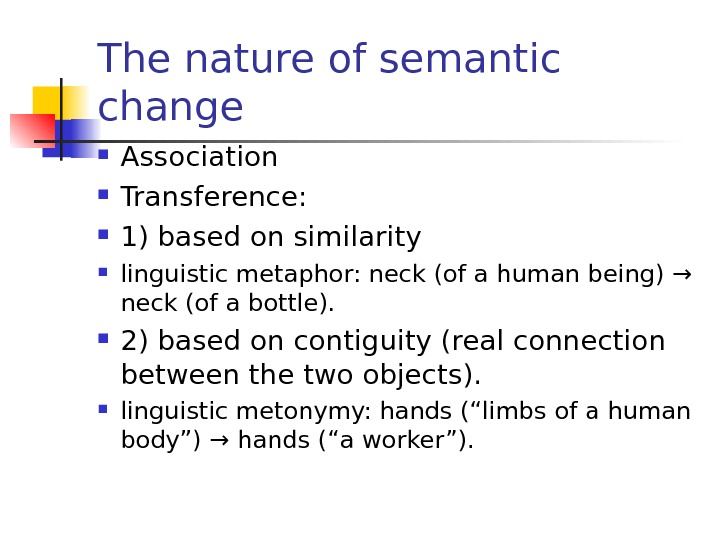
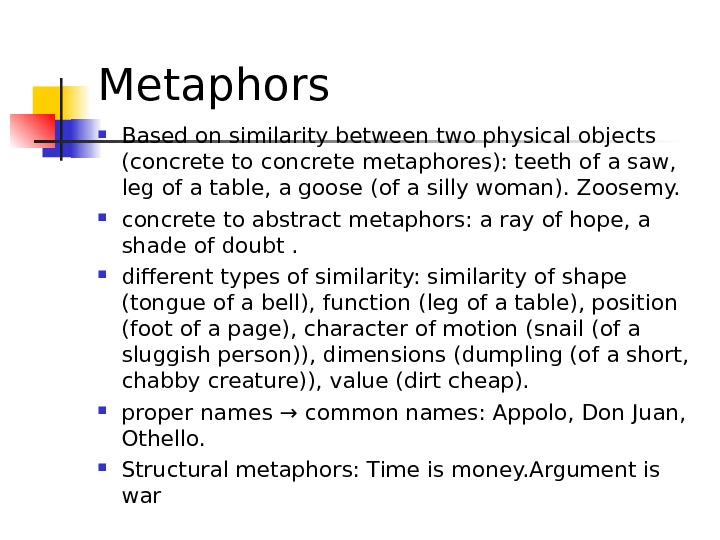


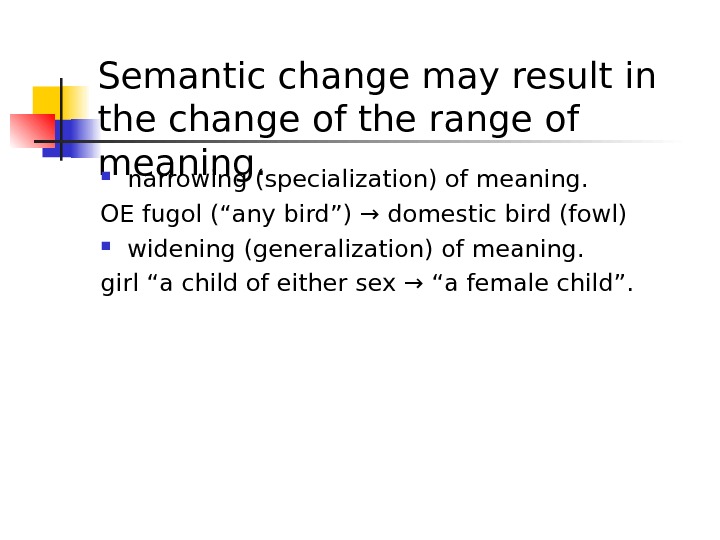

- Размер: 250 Кб
- Количество слайдов: 17
Описание презентации Lecture 2. Word meaning Word meaning is по слайдам
 Lecture 2. Word meaning is studied by the branch of lexicology called semasiology. Usually meaning is defined as the realization of a notion (or concept, in other terms) by means of a definite language system.
Lecture 2. Word meaning is studied by the branch of lexicology called semasiology. Usually meaning is defined as the realization of a notion (or concept, in other terms) by means of a definite language system.
 The word: basic unit of lexicology The most important characteristics of the word : 1. The word is a unit of speech which serves the purposes of human communication. So the word can be defined as a unit of communication. 2. The word is the total of the sounds which compose it. 3. The word possesses both external and internal characteristics.
The word: basic unit of lexicology The most important characteristics of the word : 1. The word is a unit of speech which serves the purposes of human communication. So the word can be defined as a unit of communication. 2. The word is the total of the sounds which compose it. 3. The word possesses both external and internal characteristics.
 The word is a unit used for purposes of human communication, materially representing a group of sounds, possessing a meaning, characterised by formal and semantic unity and a capacity for grammatical employment. The word may be described as the basic unit of language. Uniting meaning and form, it is composed of one or more morphemes, each consisting of one or more spoken sounds or their written representation.
The word is a unit used for purposes of human communication, materially representing a group of sounds, possessing a meaning, characterised by formal and semantic unity and a capacity for grammatical employment. The word may be described as the basic unit of language. Uniting meaning and form, it is composed of one or more morphemes, each consisting of one or more spoken sounds or their written representation.

 Types of meaning grammatical meaning (unites words into parts of speech) Ex. : goes, stops, works lexical meaning (individual for every word) Ex. : went, kissed, looked
Types of meaning grammatical meaning (unites words into parts of speech) Ex. : goes, stops, works lexical meaning (individual for every word) Ex. : went, kissed, looked
 Denotational and connotational meaning Denotational component expresses the notional content of the word, shows what the word refers to. Connotational component expresses additional meanings of the word which may be of different types: stylistic, evaluative (rational and emotional) and emotional, etc.
Denotational and connotational meaning Denotational component expresses the notional content of the word, shows what the word refers to. Connotational component expresses additional meanings of the word which may be of different types: stylistic, evaluative (rational and emotional) and emotional, etc.
 Types of connotational meaning Evaluative (rational and emotional) Ex. : brain Ex. : brock (“a scoundrel”) Cf. also: notorious – celebrated Emotional, or emotive connotation of the word is its capacity to evoke and express emotion ( duckling, darling (diminutive emotive value). Stylistic connotation shows the stylistic status of a word: neutral, bookish, colloquial, slang, etc.
Types of connotational meaning Evaluative (rational and emotional) Ex. : brain Ex. : brock (“a scoundrel”) Cf. also: notorious – celebrated Emotional, or emotive connotation of the word is its capacity to evoke and express emotion ( duckling, darling (diminutive emotive value). Stylistic connotation shows the stylistic status of a word: neutral, bookish, colloquial, slang, etc.
 Componential Analysis consists in decomposition of the word meaning into semes – minimal components of meaning, or elementary units of sense. archisemes differential semes Ex. : girl, woman, spinster
Componential Analysis consists in decomposition of the word meaning into semes – minimal components of meaning, or elementary units of sense. archisemes differential semes Ex. : girl, woman, spinster
 Motivation morhological (Ex. : leader, cranberry) phonetical (Ex. : splash, boom, chung, ching) semantic (Ex. : chain store, chain hotel, chain smoker) folk etymology asparagus sparrow grass полуклиника , спинжак→
Motivation morhological (Ex. : leader, cranberry) phonetical (Ex. : splash, boom, chung, ching) semantic (Ex. : chain store, chain hotel, chain smoker) folk etymology asparagus sparrow grass полуклиника , спинжак→
 Polysemy Ex. : do, go, see, etc. lexico-semantical variants of the word (LSVs) Primary and secondary meanings in the semantic structure of the word Table “a piece of furniture” “ a supply of food”, “an act of assembling to eat”, “a group of people assembled at a table”, etc. Meanings can also be direct and figurative, concrete and abstract, central and peripheral, general and special
Polysemy Ex. : do, go, see, etc. lexico-semantical variants of the word (LSVs) Primary and secondary meanings in the semantic structure of the word Table “a piece of furniture” “ a supply of food”, “an act of assembling to eat”, “a group of people assembled at a table”, etc. Meanings can also be direct and figurative, concrete and abstract, central and peripheral, general and special
 Semantic changes. Causes: historical, or extralinguistic, and linguistic. villain ( « деревенский житель » → « негодяй » Tory « ирландский разбойник » → « член партии Тори » lord « хранитель хлеба » → « господин , владелец , etc. » Borrowing Ex. : “any animal”: Deer, beast (Fr. ), animal (Lat. ) Ellipsis Ex. : daily newspaper→daily Analogy catch “understand”, grasp ”understand”
Semantic changes. Causes: historical, or extralinguistic, and linguistic. villain ( « деревенский житель » → « негодяй » Tory « ирландский разбойник » → « член партии Тори » lord « хранитель хлеба » → « господин , владелец , etc. » Borrowing Ex. : “any animal”: Deer, beast (Fr. ), animal (Lat. ) Ellipsis Ex. : daily newspaper→daily Analogy catch “understand”, grasp ”understand”
 The nature of semantic change Association Transference: 1) based on similarity linguistic metaphor: neck (of a human being) → neck (of a bottle). 2) based on contiguity (real connection between the two objects). linguistic metonymy: hands (“limbs of a human body”) → hands (“a worker”).
The nature of semantic change Association Transference: 1) based on similarity linguistic metaphor: neck (of a human being) → neck (of a bottle). 2) based on contiguity (real connection between the two objects). linguistic metonymy: hands (“limbs of a human body”) → hands (“a worker”).
 Metaphors Based on similarity between two physical objects (concrete to concrete metaphores): teeth of a saw, leg of a table, a goose (of a silly woman). Zoosemy. concrete to abstract metaphors: a ray of hope, a shade of doubt. different types of similarity: similarity of shape (tongue of a bell), function (leg of a table), position (foot of a page), character of motion (snail (of a sluggish person)), dimensions (dumpling (of a short, chabby creature)), value (dirt cheap). proper names → common names: Appolo, Don Juan, Othello. Structural metaphors: Time is money. Argument is war
Metaphors Based on similarity between two physical objects (concrete to concrete metaphores): teeth of a saw, leg of a table, a goose (of a silly woman). Zoosemy. concrete to abstract metaphors: a ray of hope, a shade of doubt. different types of similarity: similarity of shape (tongue of a bell), function (leg of a table), position (foot of a page), character of motion (snail (of a sluggish person)), dimensions (dumpling (of a short, chabby creature)), value (dirt cheap). proper names → common names: Appolo, Don Juan, Othello. Structural metaphors: Time is money. Argument is war
 Metonymy 1) instrument → agent: pen (“writer”); 2) consequence → cause: grey hair (“old age”); 3) symbol →the thing symbolized (crown “monarchy”) 4) material → the thing made from it (silver “money”) 5) container → the thing contained (to drink a cup); 6) name of a place → institution (Whitehall); 7) action → the object of action (my love); 8) quality →the person possessing the quality (He is a talent).
Metonymy 1) instrument → agent: pen (“writer”); 2) consequence → cause: grey hair (“old age”); 3) symbol →the thing symbolized (crown “monarchy”) 4) material → the thing made from it (silver “money”) 5) container → the thing contained (to drink a cup); 6) name of a place → institution (Whitehall); 7) action → the object of action (my love); 8) quality →the person possessing the quality (He is a talent).
 Synechdoche is a variety of metonymy which consists in using the name of a part to denote the whole or vice versa: Hands are wanted; OE mete “food” →Mn. E meat “kind of food”.
Synechdoche is a variety of metonymy which consists in using the name of a part to denote the whole or vice versa: Hands are wanted; OE mete “food” →Mn. E meat “kind of food”.
 Semantic change may result in the change of the range of meaning. narrowing (specialization) of meaning. OE fugol (“any bird”) → domestic bird (fowl) widening (generalization) of meaning. girl “a child of either sex → “a female child”.
Semantic change may result in the change of the range of meaning. narrowing (specialization) of meaning. OE fugol (“any bird”) → domestic bird (fowl) widening (generalization) of meaning. girl “a child of either sex → “a female child”.
 The change of the connotational structure Degradation (pejoration) of meaning: the process when the object to which the word refers acquires negative characteristics, and the meaning develops a negative evaluative connotation. OE word cnafa (Mn. E knave) “a boy” → a “boy servant” → “a swindler, a scoundrel”. Elevation (amelioration): the development of a positive evaluative connotation. OE cwen (Mn. E queen) “woman” cniht (Mn. E knight) – “a young servant”
The change of the connotational structure Degradation (pejoration) of meaning: the process when the object to which the word refers acquires negative characteristics, and the meaning develops a negative evaluative connotation. OE word cnafa (Mn. E knave) “a boy” → a “boy servant” → “a swindler, a scoundrel”. Elevation (amelioration): the development of a positive evaluative connotation. OE cwen (Mn. E queen) “woman” cniht (Mn. E knight) – “a young servant”

